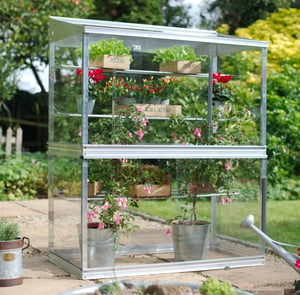How to Build Your Own Greenhouse: A Step-by-Step Guide
How to Build Your Own Greenhouse: A Step-by-Step Guide
Blog Article
Greenhouse gardening is one of the very rewarding methods to develop plants year-round, but it takes cautious preparing and methods to make certain success. With managed conditions, you are able to foster flowers aside from outside weather, but it will take the right strategies to produce a great environment as part of your greenhouse.Below are a few crucial tips to help your plants succeed through the entire year.

Focus on Temperature Control
Sustaining the right heat is crucial for greenhousegardening. Plants succeed in numerous heat stages relying on the form, therefore it's necessary to check and adjust conditions accordingly. During colder months, choose trusted greenhouse heater or efficiency methods to maintain warmth. Use computerized ports or supporters in summer to prevent overheating, as conditions above 85°F may tension flowers and stop their growth. Coupling these systems with an easy thermometer allows you to keep a consistent environment.
Manage Humidity Levels
While greenhouses naturally keep higher moisture levels, an excessive amount of humidity may inspire form or mold growth. For a healthier stability, measure humidity frequently employing a hygrometer. Shoot for around 50-70% relative humidity, modifying with correct ventilation programs or a dehumidifier if needed. Also, space plants properly ensures better air flow, lowering the chance of fungal diseases.
Choose the Right Plants
Not totally all plants are suited to greenhouses. To maximize yield and accomplishment, choose crops that align effectively with the growing season and your greenhouse conditions. During cooler weeks, grow crops like lettuce, kale, or broccoli, which prosper in a colder environment. Warm-weather crops like tomatoes, cucumbers, and peppers flourish in the spring or summer within higher temperatures. Pairing complementary flowers also assists build biodiversity and obviously deters pests.

Use Quality Soil and Fertilizers
The quality of your soil directly affects seed growth. Pick a nutrient-rich land combine specifically designed for greenhouse plants. Enrich your planting beds with organic subject like compost to improve fertility. Frequently give your crops with fertilizers matched to their needs—some flowers may possibly require high nitrogen for leafy growth, while the others thrive with potassium-rich mixtures for fruit development.
Practice Integrated Pest Management
Pests can find their way in to even probably the most controlled greenhouses. Present valuable bugs like ladybugs to target dangerous pests such as aphids naturally. Examine crops often and eliminate any pests personally if noticed early. Contemplate normal or compound therapies as a final resort but use them moderately in order to avoid damaging useful bacteria and organisms.
Click here for more information check out the site at greenhousestores.co.uk/ to get the knowledge about greenhouse. Report this page